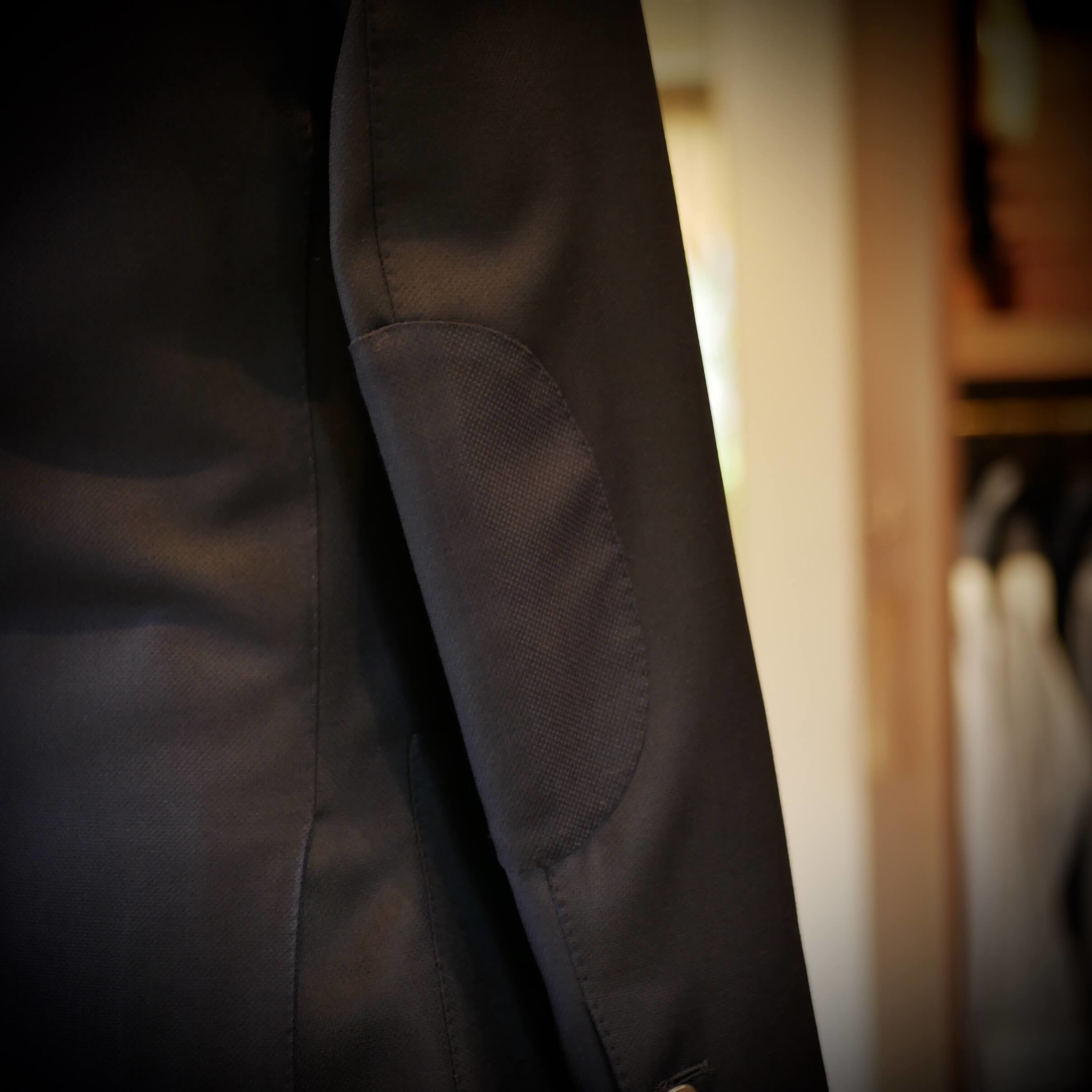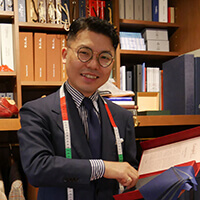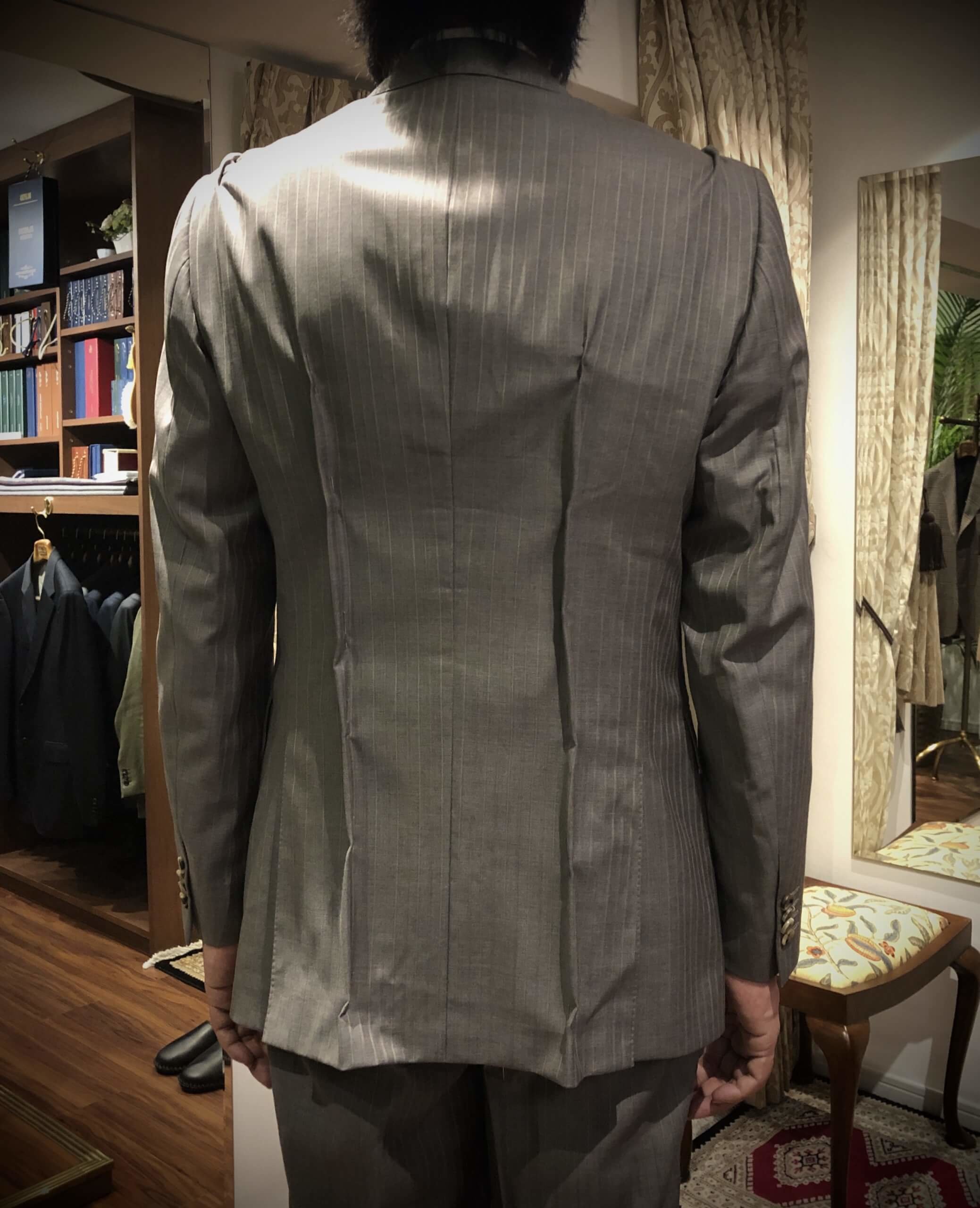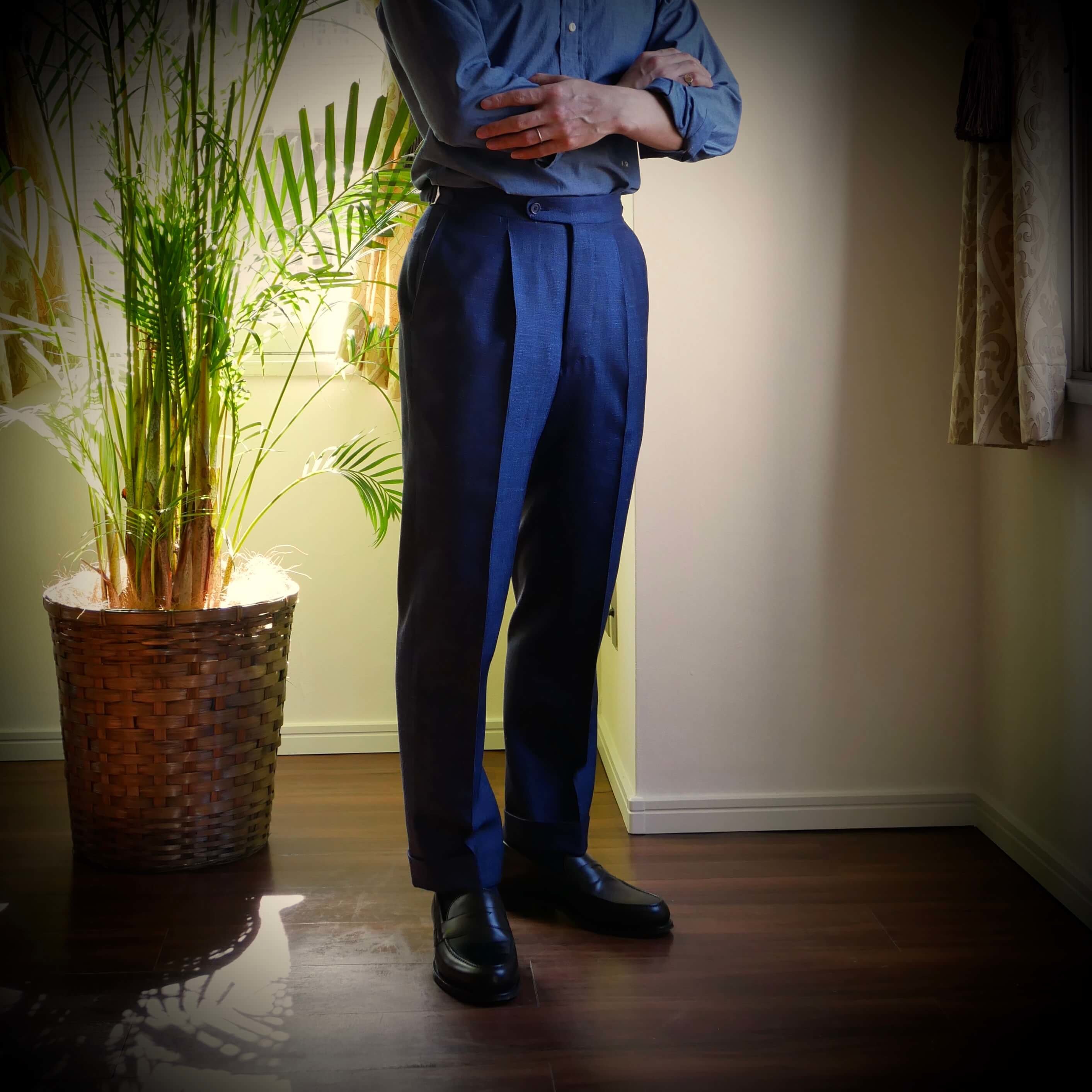Jacket Elbow Patch & Trouser Crotch Repair – Repair and Reform
We all want to wear our favorite clothes often and for as long as possible. However, the more we wear them, the more they inevitably wear out--a dilemma for any wardrobe. One of the biggest enemies is "friction," which directly damages the fabric, and unfortunately, it's unavoidable with any garment. Over time, areas prone to friction--such as the elbows and underarms of jackets, or the inner thighs and seat of trousers--gradually thin out and may eventually develop holes. In this article, we introduce real-life examples of repairs for holes caused by friction.
Repairing Elbow Holes with Elbow Patches
This navy blazer was tailored for the customer over ten years ago at my previous workplace and has been cherished ever since. Over the years, we have carried out regular repairs, such as button replacements and lining fixes, but this time, the elbows had finally worn through.
Before
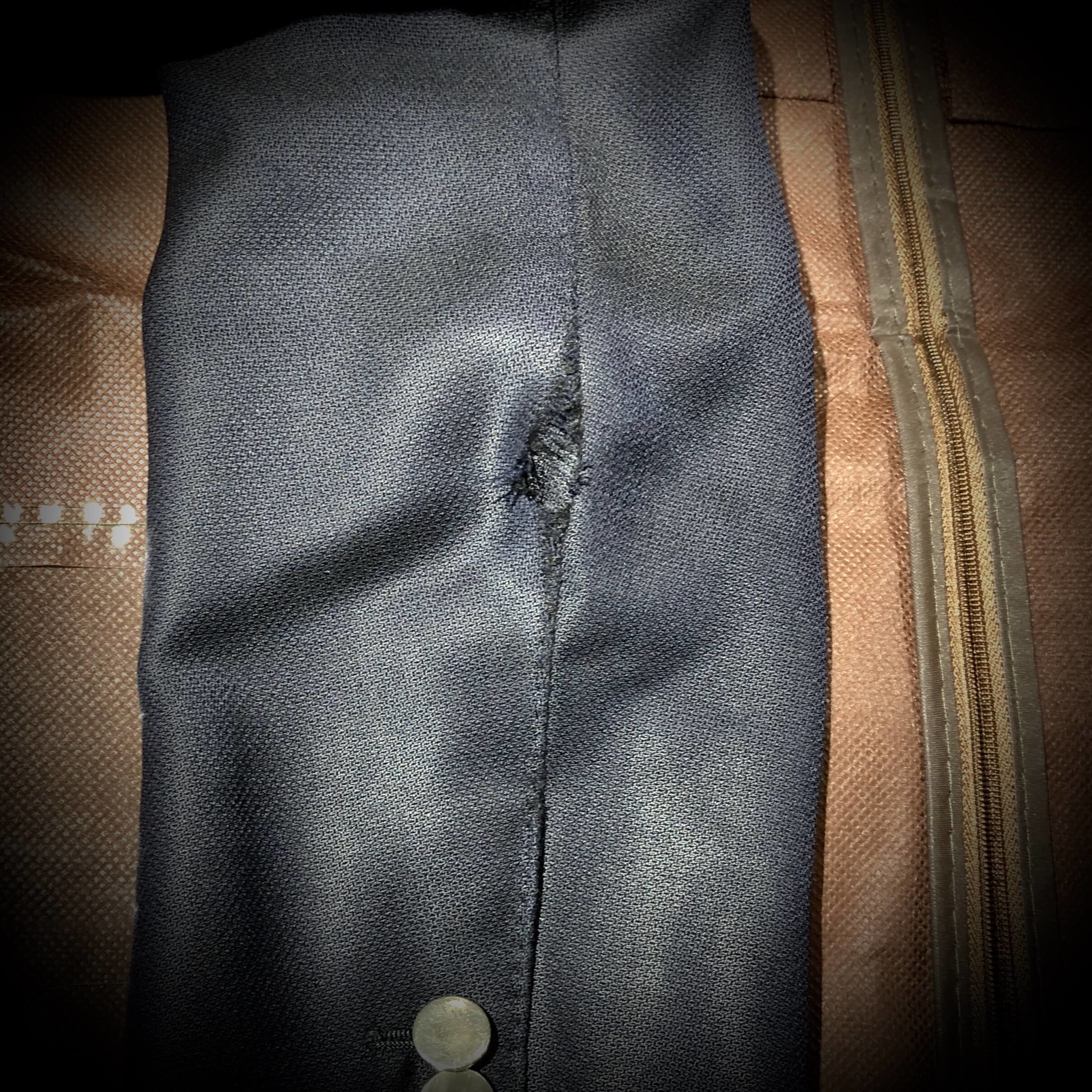
The elbow area--friction has worn through the threads, leaving a complete hole.
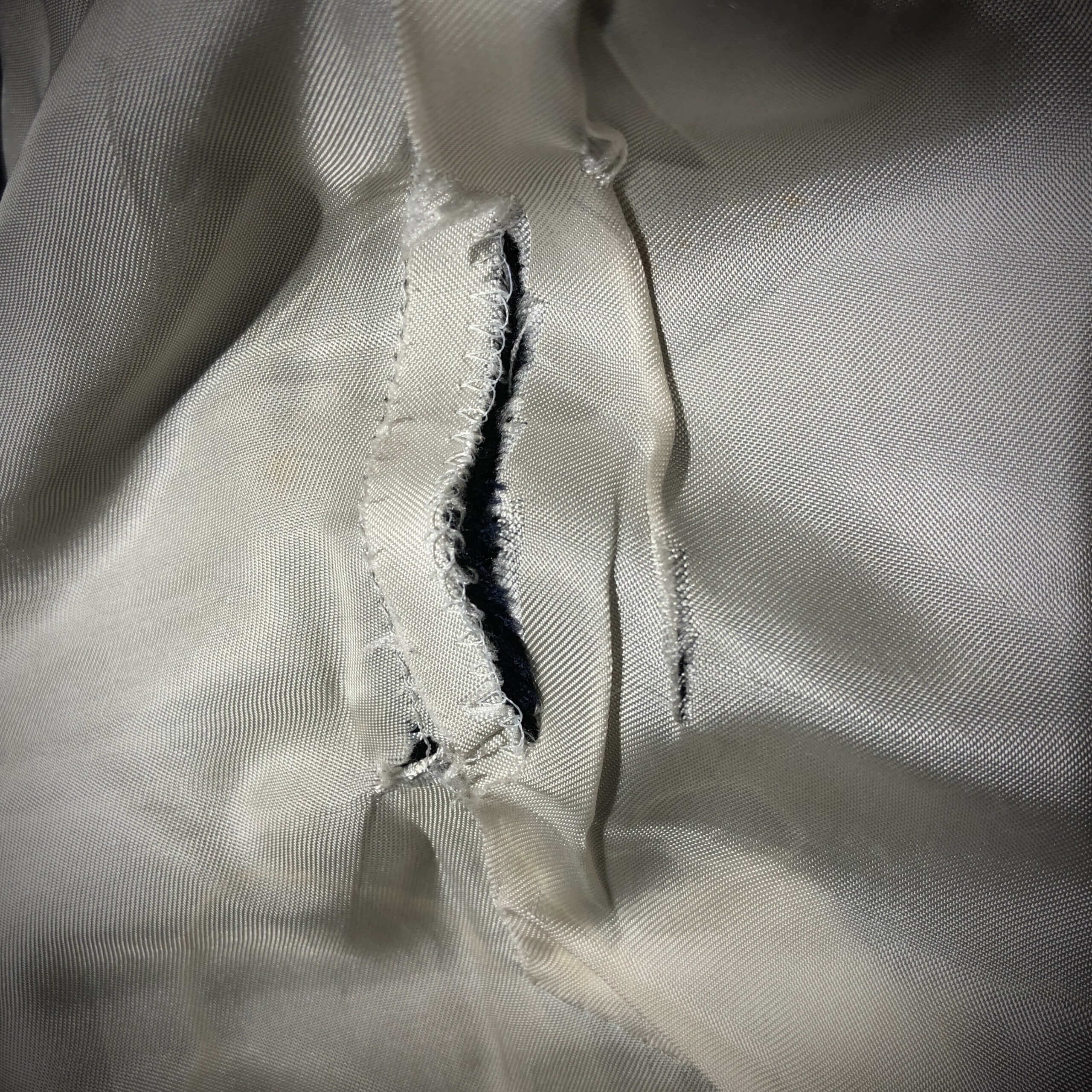
View from the inside: the lining is also torn.
If the hole is small, it can be stitched closed, but in this case, the hole was large. Sewing enough to hide it would have made the sleeve too narrow. Another common method for repairing holes is "machine darning" (placing a patch behind the hole and reinforcing it by sewing over it), but this can leave visible repair marks and create stiffness in the area, leading to further tearing around the repair--an endless cycle.
For this reason, we suggested using an "elbow patch." While some casual jackets and knits come with elbow patches from the start--both as reinforcement and a design feature--they can also be added later.
Elbow patches generally come in two types: (1) patches made from matching fabric (or identical fabric if available) to blend in, or (2) patches in materials like faux suede for a contrasting accent. The latter gives a more casual feel. Since the customer wanted to maintain a formal appearance, we chose a patch in a similar fabric that would be as discreet as possible.
After

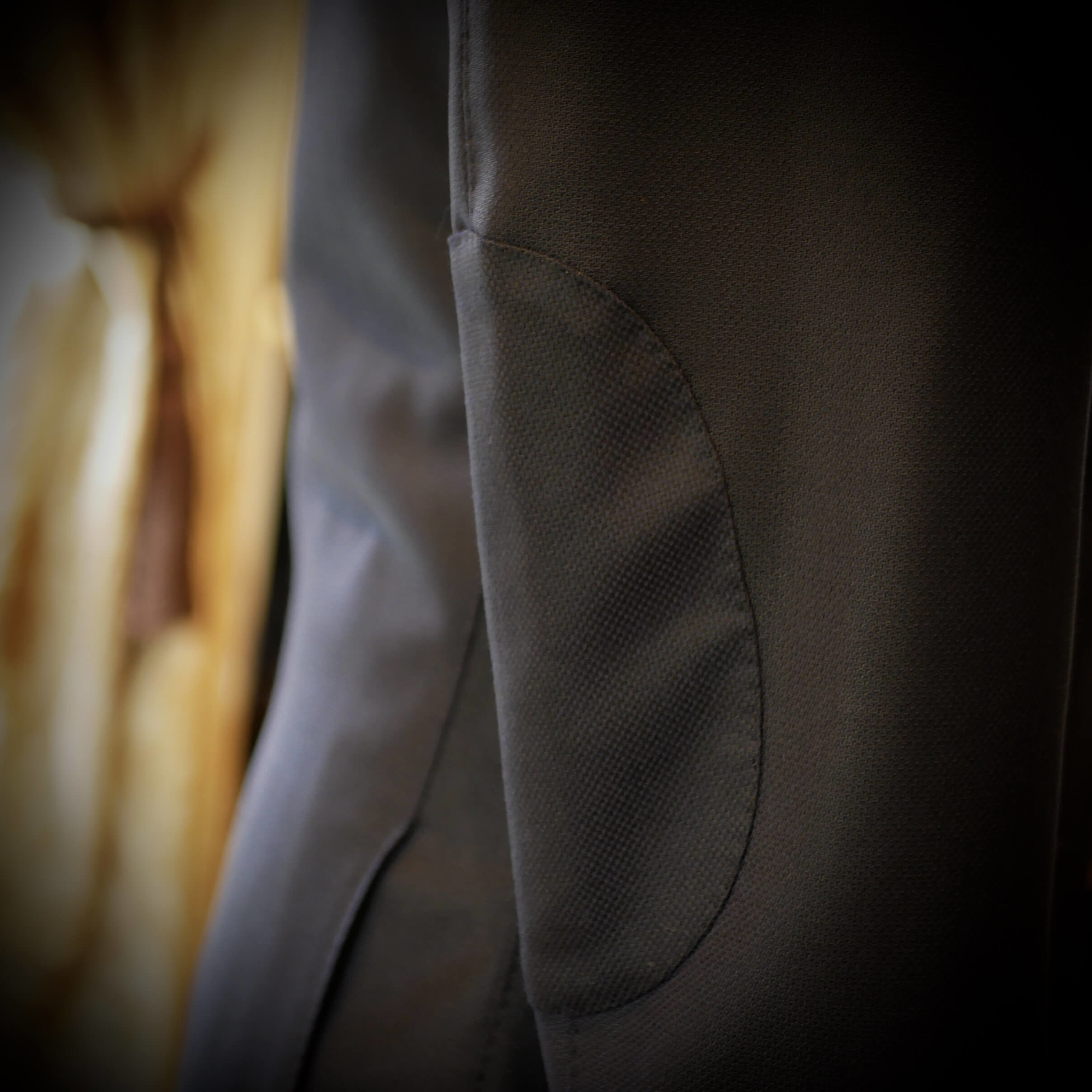
We sourced fabric with a similar color and weave to the original jacket material. While the shade is slightly different upon close inspection, the soft texture blends well, creating a harmonious look. It even adds a touch of charm to the design.
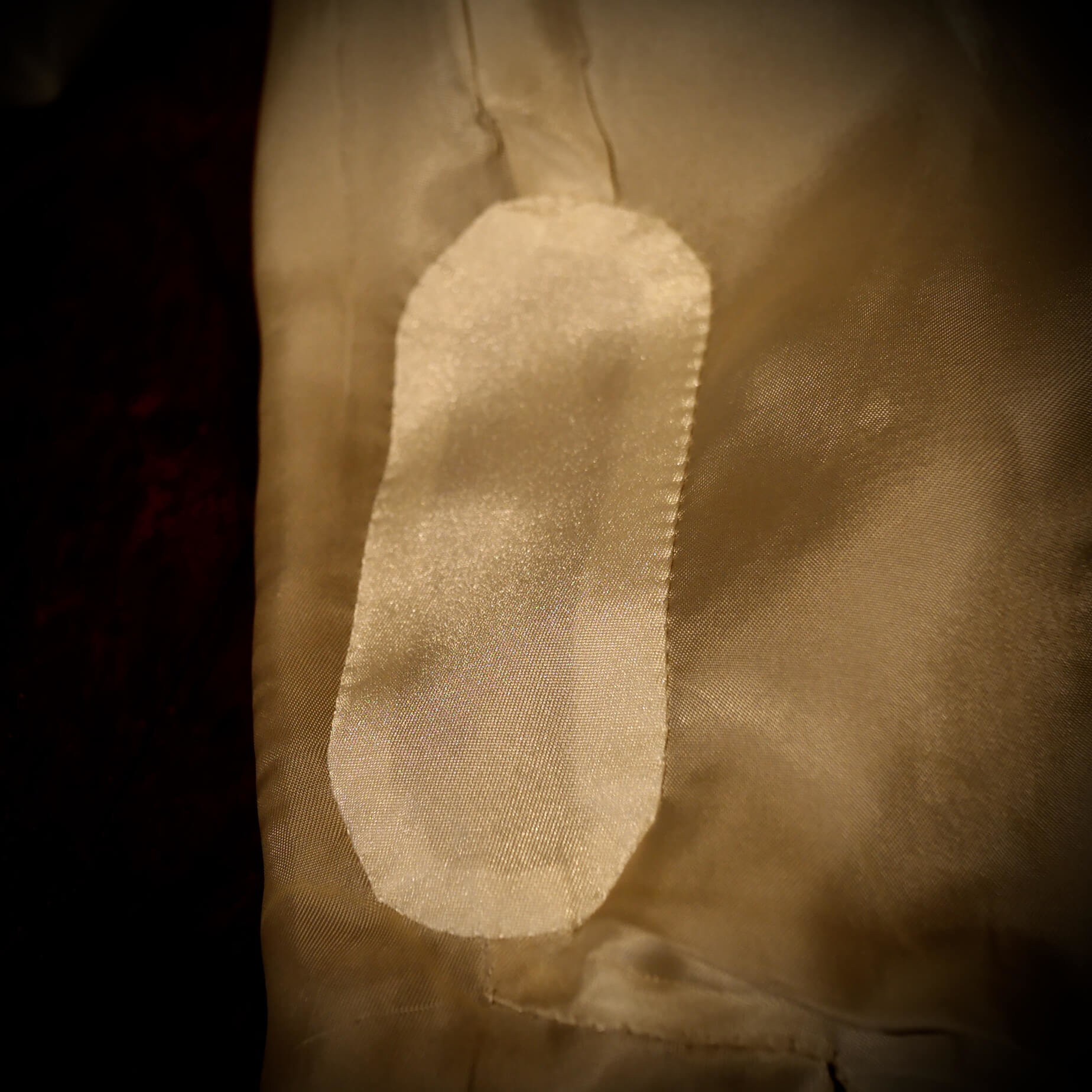
The torn lining was also replaced with new fabric.
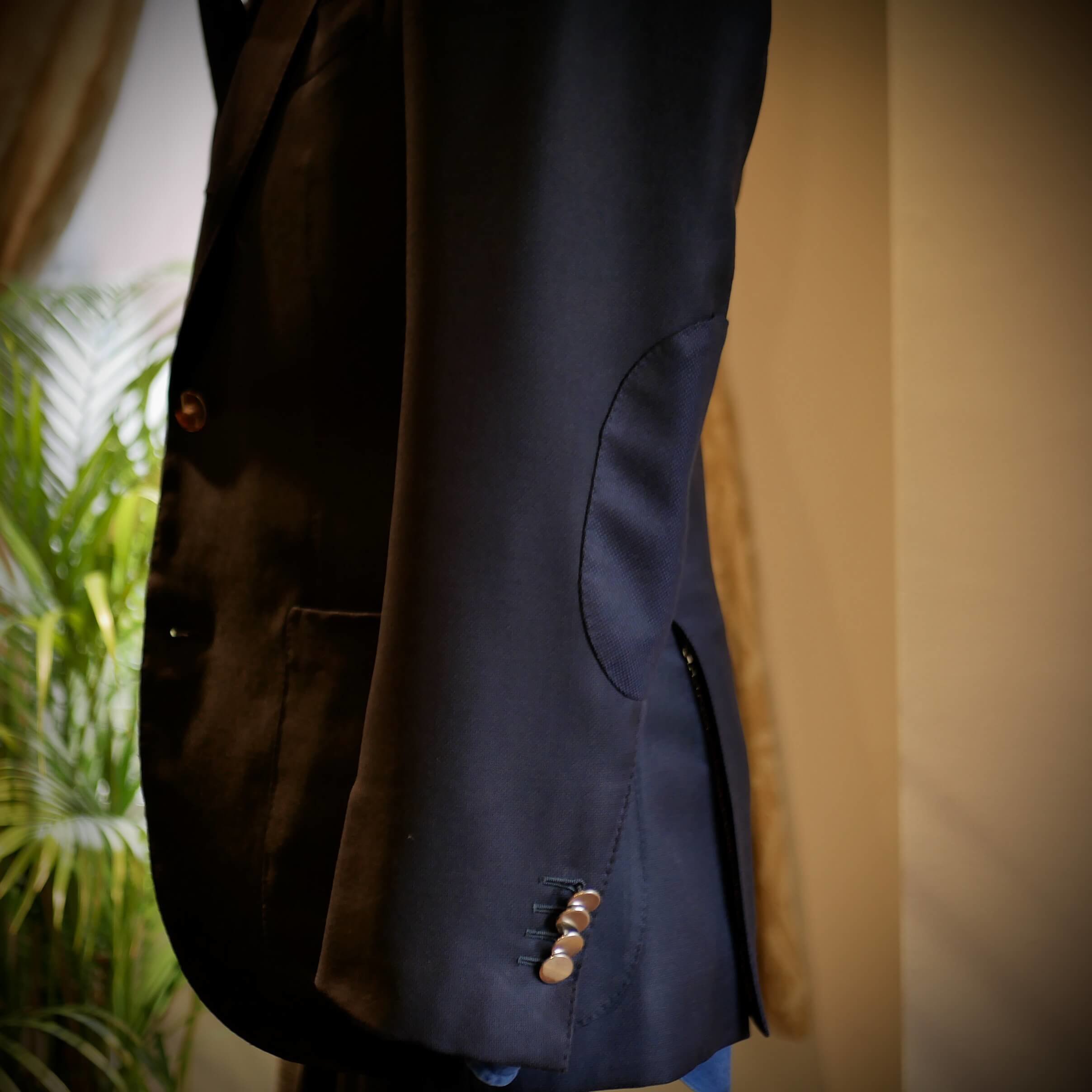
Having been worn and loved for so long, I think this navy blazer can be proud of its journey. While repairing the hole was necessary, I feel the elbow patch has enhanced the blazer's character even further.
Reference repair cost: ¥7,000 (including fabric for the elbow patches)
Repairing Inner Thigh Wear with Fusible Interfacing
Next, we have a repair for "inner thigh wear." While our trousers--and most well-made trousers--feature linings or crotch shields (a patch sewn in to protect the seam in the crotch area) to prevent such damage, depending on the wearer's build, walking style, and the trouser fabric, it can still occur.
This damage happens when the inner thigh fabrics rub together with each step, gradually wearing down the material. Since the area isn't visible while worn, and not often checked when removed, many people are surprised to discover a hole one day. (We encourage you to check your trousers' inner thigh area--brushed fabrics are particularly prone to this!)
In this case, the customer initially brought in their suit for size adjustments, and during our inspection, we discovered the inner thigh wear.
Before
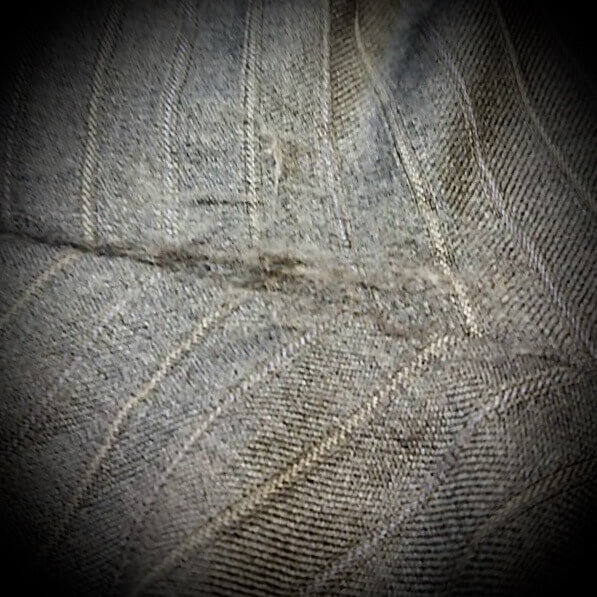
Fortunately, this was caught before a hole had formed--the fabric surface had worn thin. Although not a brushed material, friction had cut some fibers, creating a slightly fuzzy texture like that of brushed fabric.
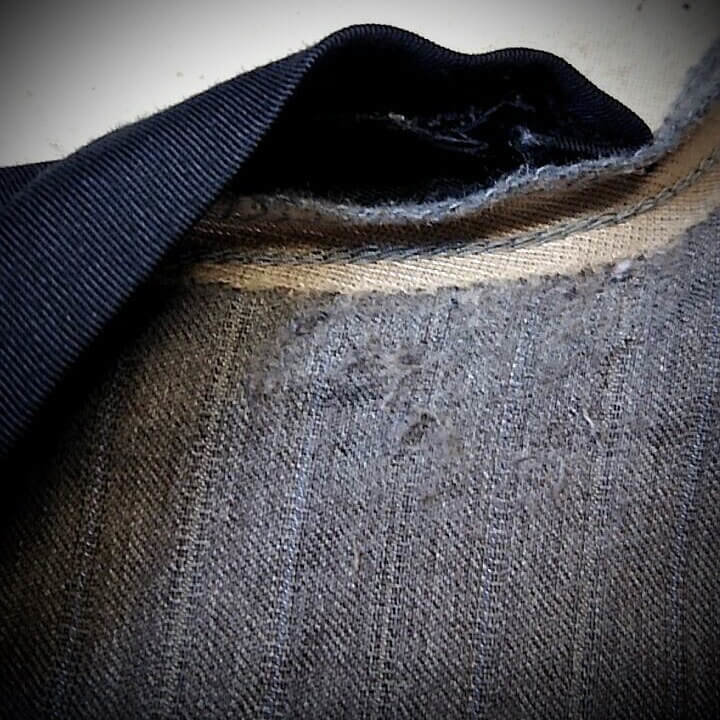
View from the inside: the same fuzzing is visible. The black piece in the upper left is the crotch shield.
For trousers with holes, the standard repair is to apply a patch behind the worn area and machine darn over it, but as mentioned earlier with jackets, this can cause stiffness and stress on the surrounding fabric. Since there was no hole yet, we chose a repair method that would reinforce the weakened fabric without creating stiffness.
After
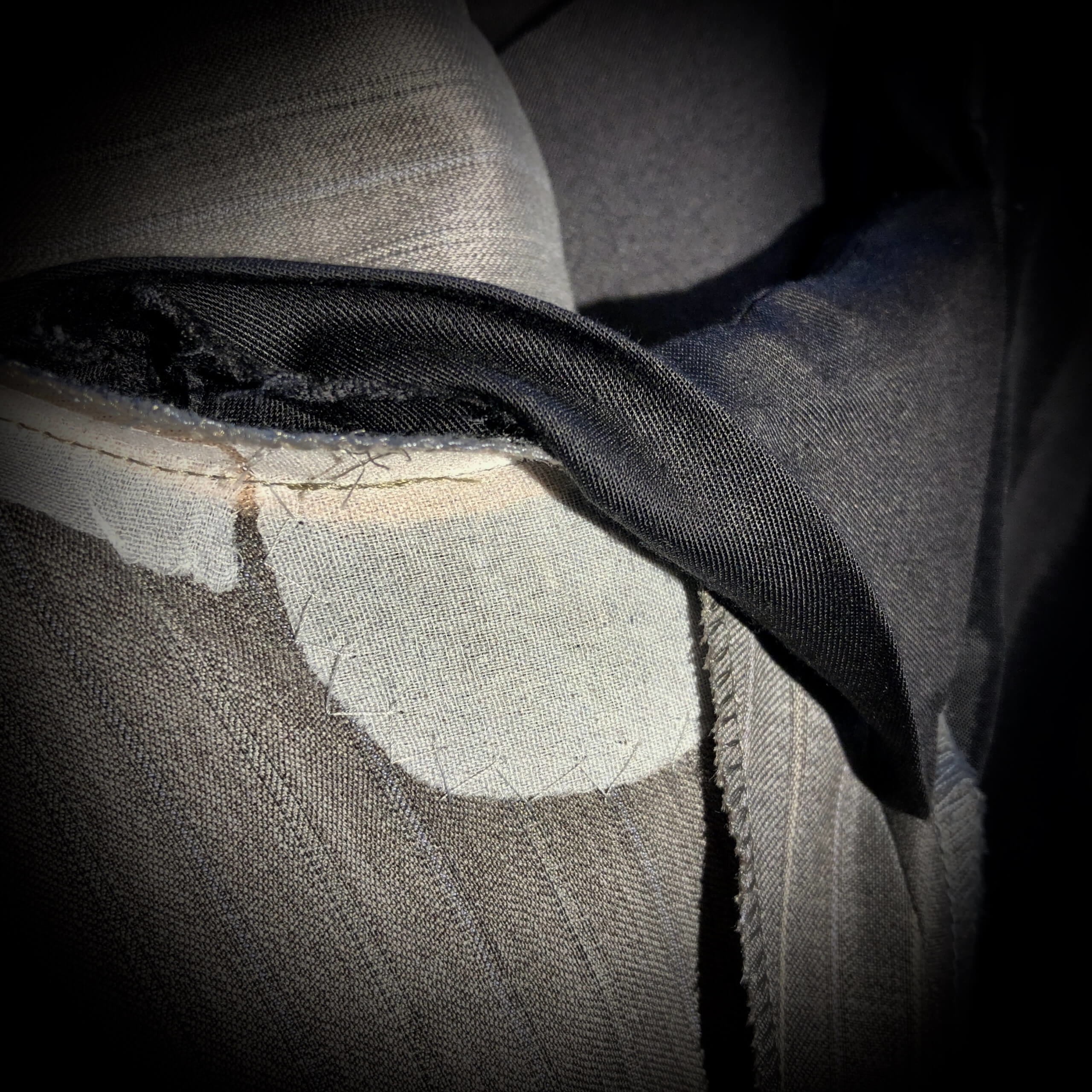
We applied fusible interfacing to the thin area and stitched around it to ensure it stays in place. This supports the weakened fabric while maintaining flexibility, minimizing damage to the surrounding areas.
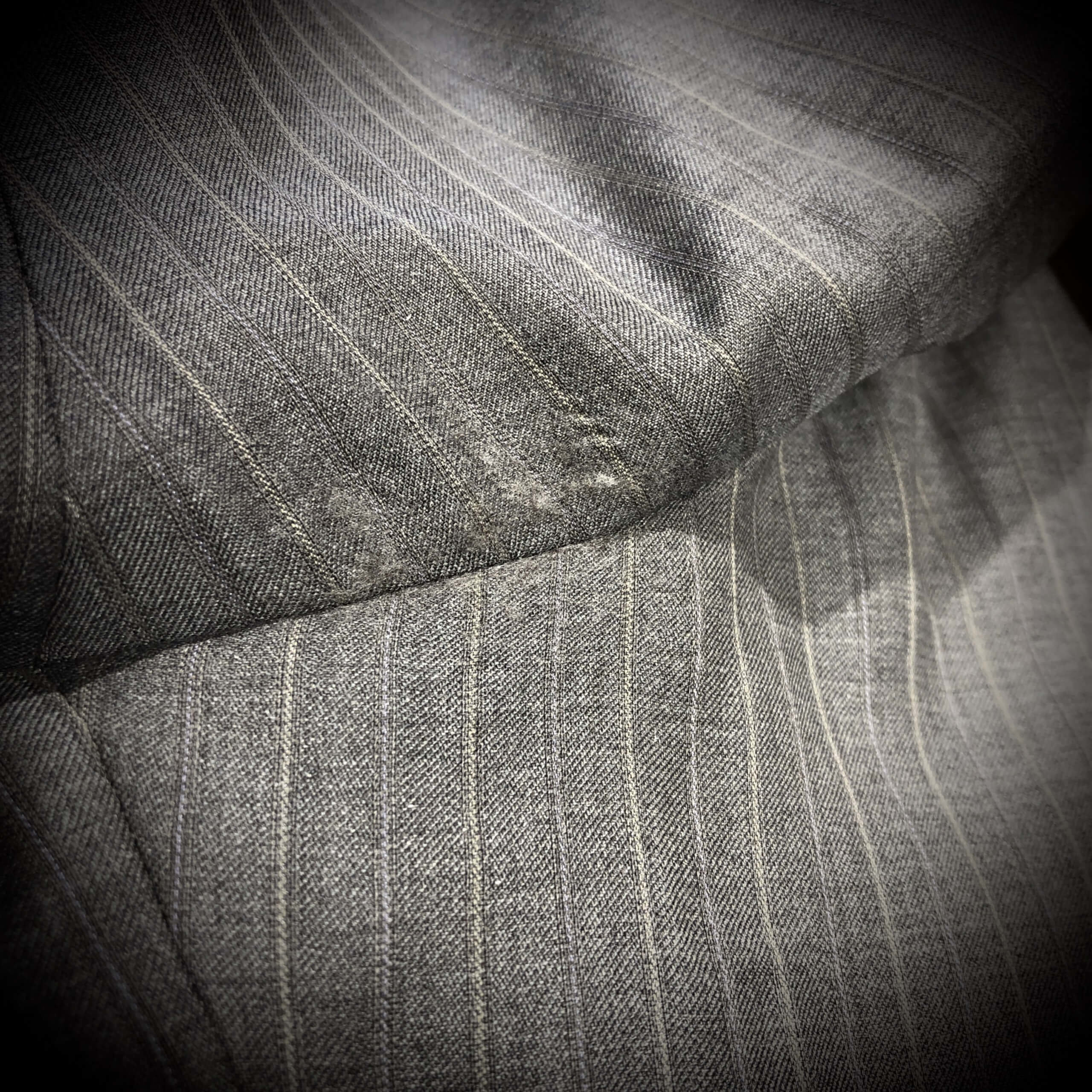
On the outside, we trimmed away any excess fuzz to neaten the appearance.
By catching the wear early, we were able to restore the trousers naturally while preserving their flexibility--at a lower cost than machine darning. The customer can now continue wearing them for years to come.
Reference repair cost: ¥2,000
We hope you enjoyed this repair feature. Among well-dressed figures known for patching their suits is none other than King Charles III of the British Royal Family--so much so that the term "Charles Patch" was coined. Wearing luxurious suits, jackets, and trousers with mended patches can be seen as either "shabby" or as "stylish and respectful toward one's belongings." Personally, I believe that, regardless of price, continuing to wear a favorite garment through repairs is a wonderful thing.
That is why we are committed to offering the best possible repair solutions, no matter how challenging, along with estimates. Please don't hesitate to reach out, even if you think the damage is "too big and embarrassing." As in the examples shown here, we are more than happy to work on garments not purchased from us. There is always a way to fix any damage. Knowing this may free you from the dilemma of clothes wearing out the more you love them, allowing you to enjoy heavy use of your favorites without worry.
Please contact us via the Contact Form, or use the Reservation Form if you prefer an in-store consultation. We look forward to assisting you.
Photo Gallery
Posted by Tomohiro Hayashi
The Dressing Lab specializes in bespoke tailoring. While we can tailor most items given some time, we do not have ready-to-wear garments available for immediate purchase.
We deal exclusively in high-quality custom-made items, requiring at least one month for completion of any piece. For those desiring bespoke services or in cases where fittings are necessary due to body shape, it may be required to visit our salon 2 to 3 times.
We kindly ask for your understanding of the above conditions before placing an order. We eagerly await your consultations and reservations.
*Please make sure to reserve an appointment before visiting our store.
We gladly welcome appointments for consultations or viewings, so please don't hesitate to reach out to us.
